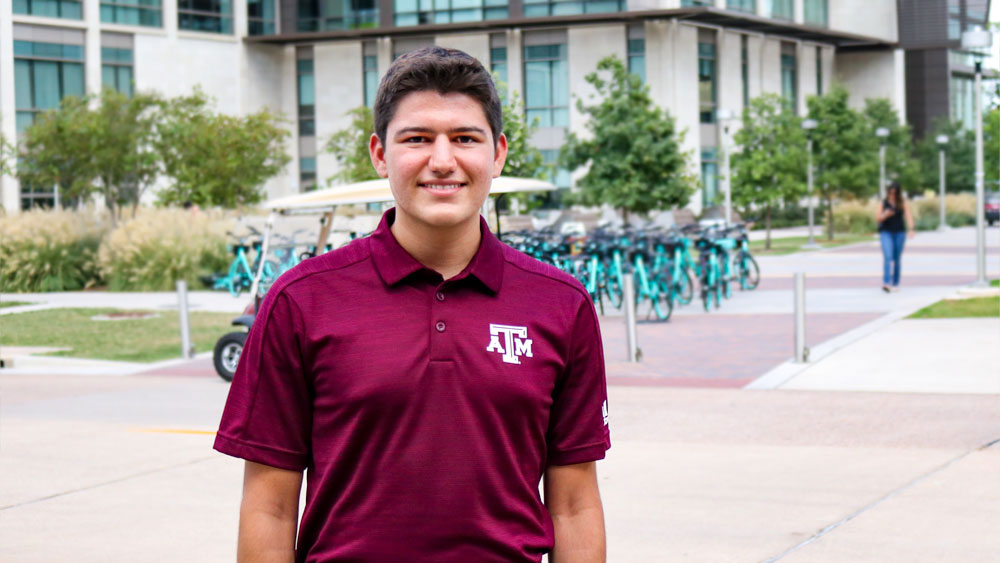
Entering college with mathematics credits and experience in Python programming, Bora Oztekin, an engineering freshman at Texas A&M University, is no stranger to tackling challenges and going the extra mile.
“I feel like a lot of people are just waiting for their passion to come to them,” said Oztekin. “But it usually doesn't come knocking on your door to say, ‘I'm here. Hi, I'm passion.’ You have to go find it yourself.”
So he did.
Joining the AggiE_Challenge, which aims to engage engineering undergraduate students in multidisciplinary team research projects that tackle real-world issues, Oztekin is applying his passion and experience in data coding to disaster relief and resilience.
Led by Dr. Ali Mostafavi, assistant professor in the Zachry Department of Civil and Environmental Engineering, and Dr. Xia "Ben" Hu, assistant professor in the Department of Computer Science and Engineering, Oztekin and his fellow researchers are developing a web-based system to boost resilience in times of catastrophe.
This disaster informatics project – which has the ultimate goal of creating a simulation akin to Sims City for those in charge of disaster relief – will provide a vital tool to cities and communities. With the ability to run different disaster and response scenarios, the system will not only aid in a more efficient and effective response to disaster, but will provide a method to help support and strengthen city infrastructure.
“What we're trying to do is use all sorts of data to essentially establish a better response to emergency situations like Hurricane Harvey,” said Oztekin. “When you think from an engineering standpoint, there are inefficiencies with any disaster response. The goal of this project, if I were to sum it up, is to minimize (those inefficiencies) to hopefully be able to save more lives and make the most out of the resources that we have.”
Focusing on coding and data processing, Oztekin is transforming datasets into visualizations that resonate with the general public – turning such information as census tracts into a map of neighborhoods labeled with commonly used names like Sugar Land and The Woodlands.
“I make the data understandable so that people can make more out of it and understand how to respond,” said Oztekin.
It is critical for users to be able to interpret the impact of a disaster and decide how to effectively respond. This not only aides in boosting the resilience – the ability to bounce back – of a city and its infrastructure, but also helps first responders and engineers to save the lives of victims in need. Oztekin is pleased he’s able to turn his passion into something that can help people.
“I've been interested in computer science since second grade,” Oztekin said. “And now that I’m at Texas A&M, I’m working with professors and researchers who are at the top of their field. There's so many opportunities here and so many people who want to get you involved in something, so I think people should just go for it.”